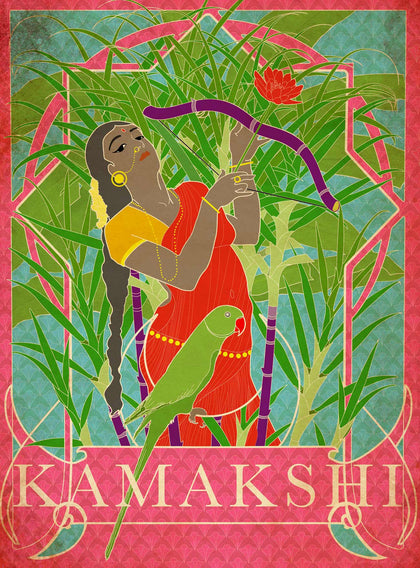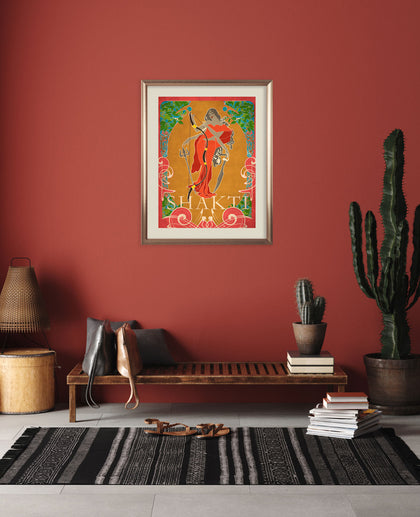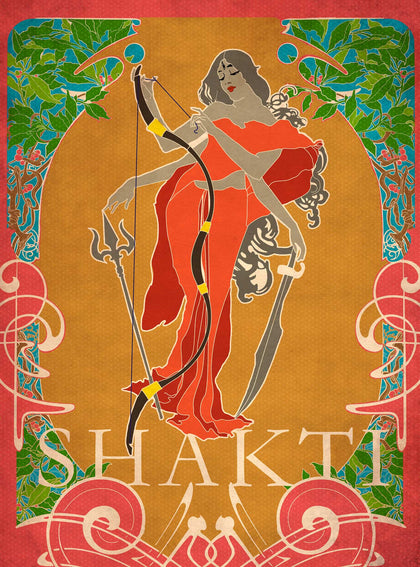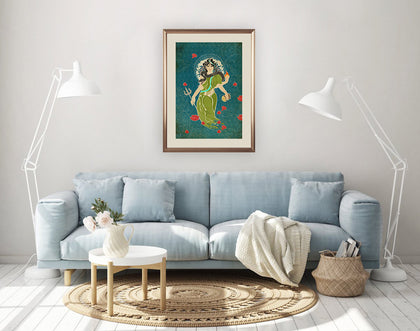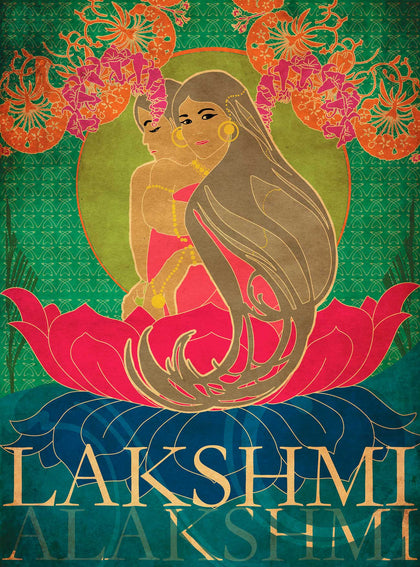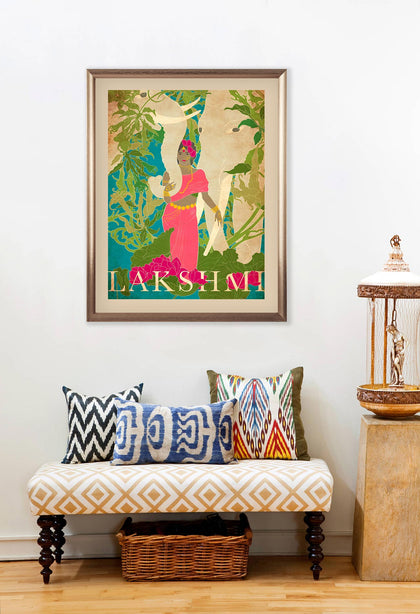Description
The oldest hymns were composed on her banks, a glorious beauty with her lilies and swans flowing through Punjab, Sindh and Rajasthan. A river of language, imagination and music, she is Shatarupa - the goddess of infinite forms. All addressing the conception of creation - the one question - Who am I?
In taking that step, from being wakeful to understanding, her unblinking eyes gather as her mind absorbs. For she is the goddess of all that is known and understood. She is knowledge. Immersed in music and texts, she remains aloof, claiming the sovereignty of the mind over every other reality. Watching syllable by syllable appear, she witnesses the construction of knowledge.
Despite all efforts to pair her with one god or the other, she remained distant. Interested in wisdom alone, calm and content in isolation, her journey was a solitary one. Her stories are sparse. In the pantheon of gods who display power, looking for lovers, partners, wealth, or even for power itself, she stayed detached. A unique manifestation in which she needs little else but herself.
Although, as a river, she shatters the separation between Purusha and Prakriti, mind and matter, body and soul, and the strange belief that nothing in nature leads to the mind. Her state of being and the secrets she holds, keeps us from being paralyzed by wisdom. Despite all that is known, our world (once, with her river in it), pursues its course.
About the Series:
This artwork is part of the “Sister Misfortune” series, through which the artist, Smruthi Gargi Eswar, narrates lesser-known stories from Indian mythology, while reflecting on the narrative surrounding women in our culture. Various Indian goddesses (devis) are depicted with a refreshing artistic lens.
In India, there is a constant burden on women to be “Devi-like”. Through this series, the artist attempts a reverse deification of the goddesses, making them appear like real women, in a real world. The series is an exploration not just of duality, but of multiplicity. It compels us to question our attitudes - women towards themselves, men towards women. How does the idea of a goddess coexist within every woman? How do we, as a society, so casually dismiss, disrespect, disregard, and defile in our everyday existence, those who we have bedecked with gold and enshrined in a temple?
























































































 View Full Screen
View Full Screen































